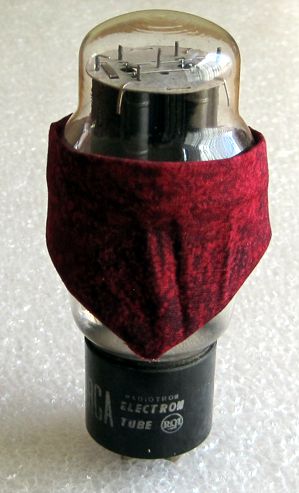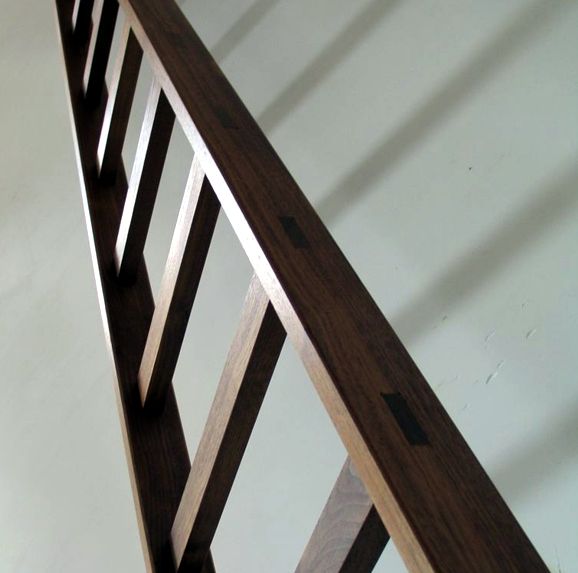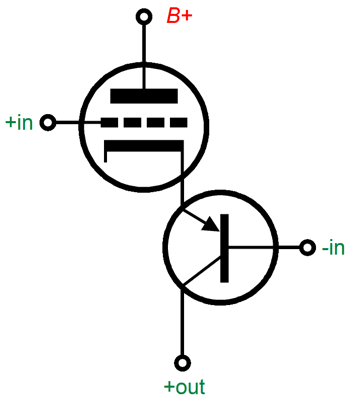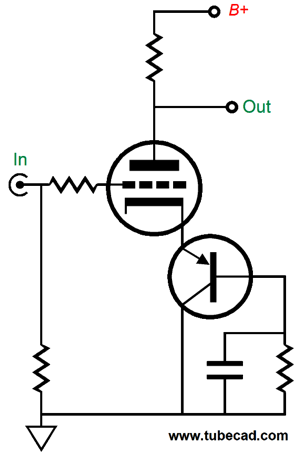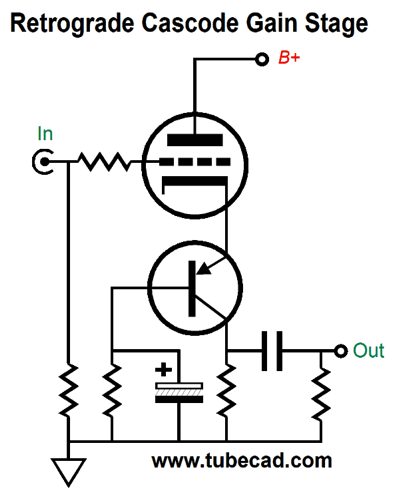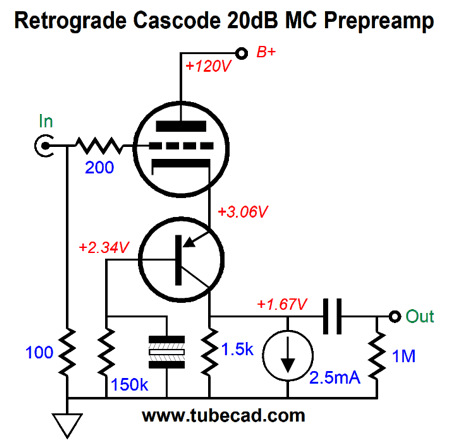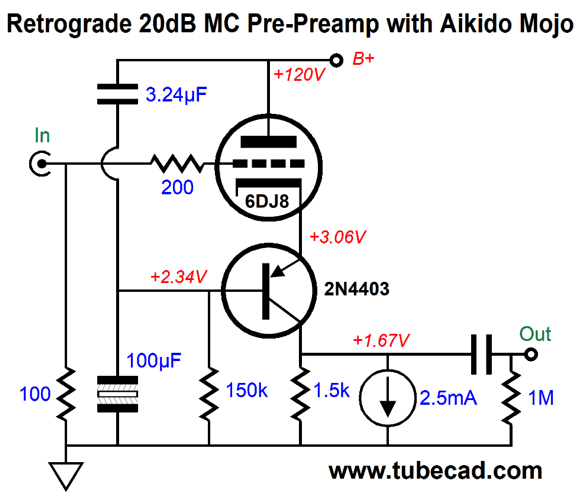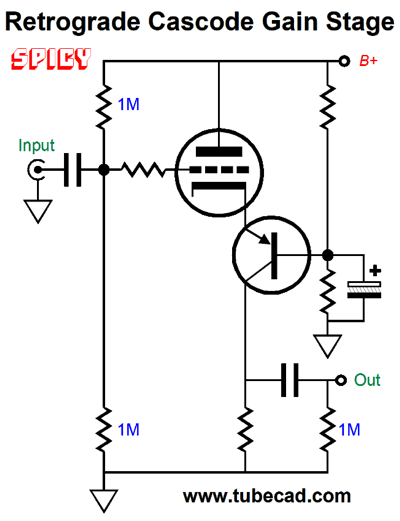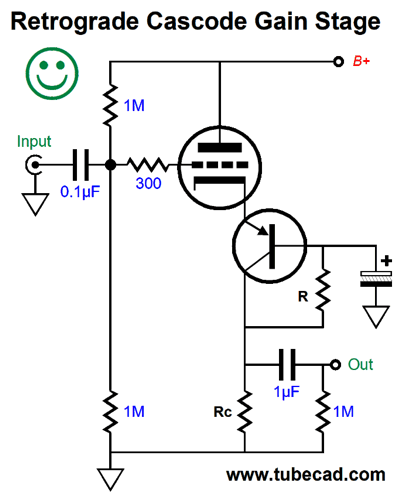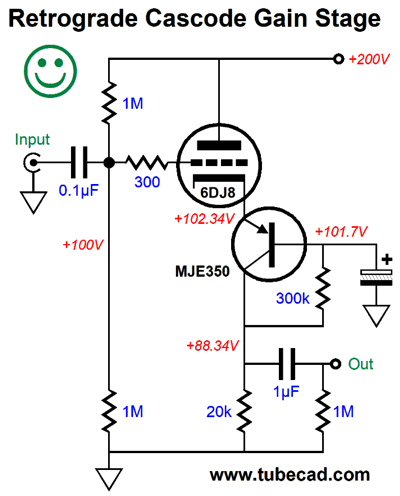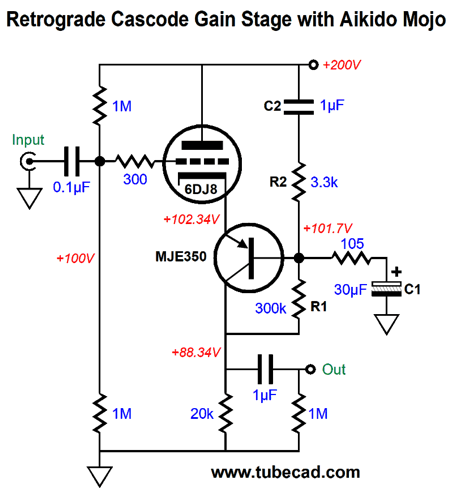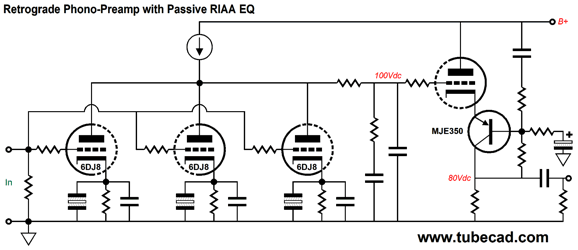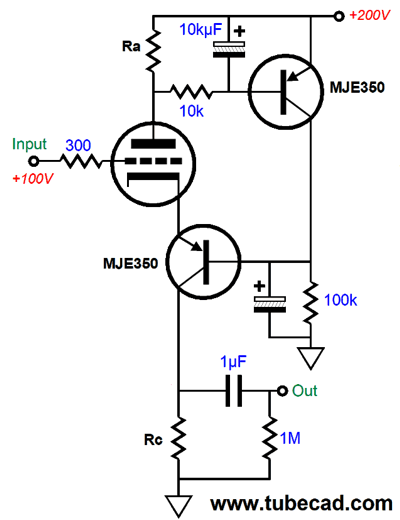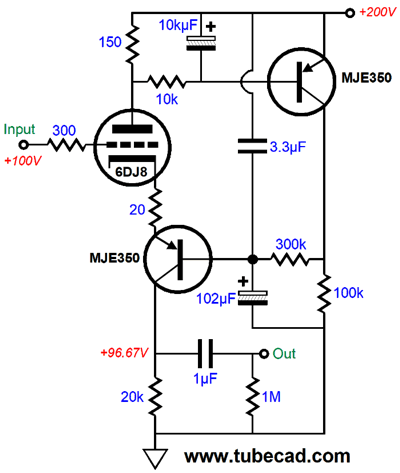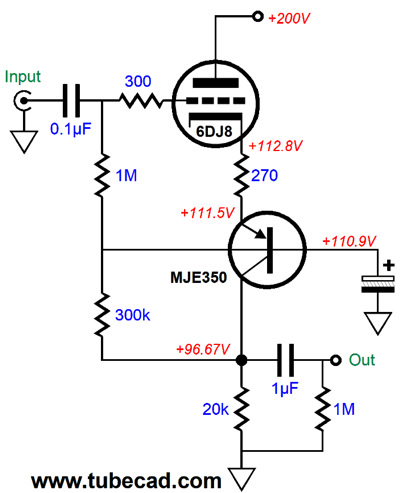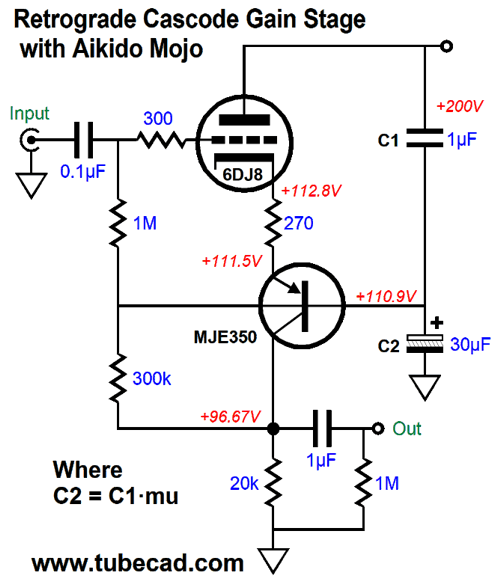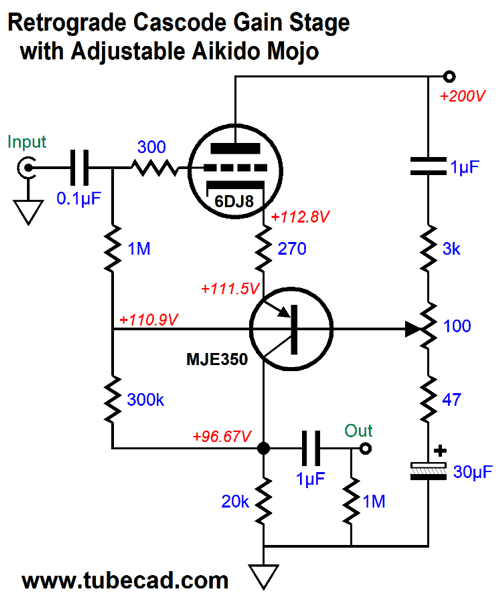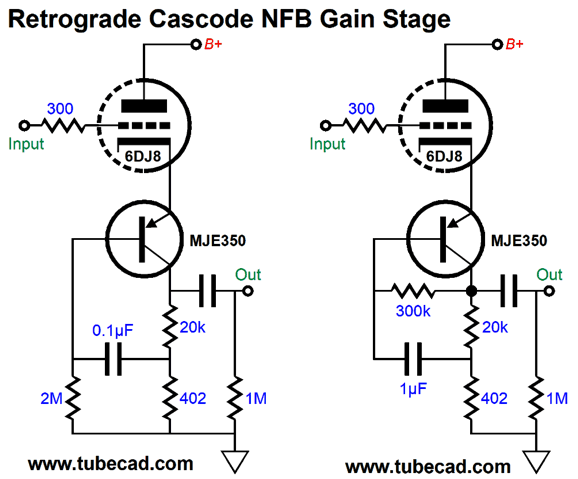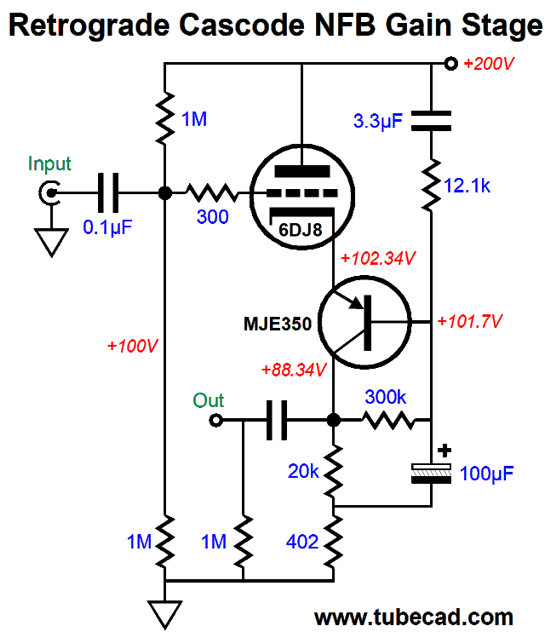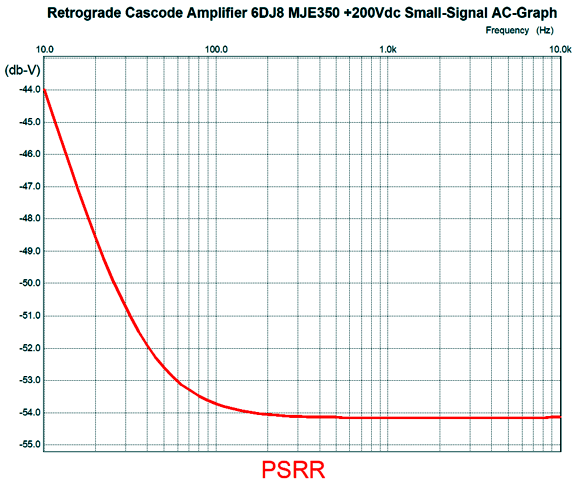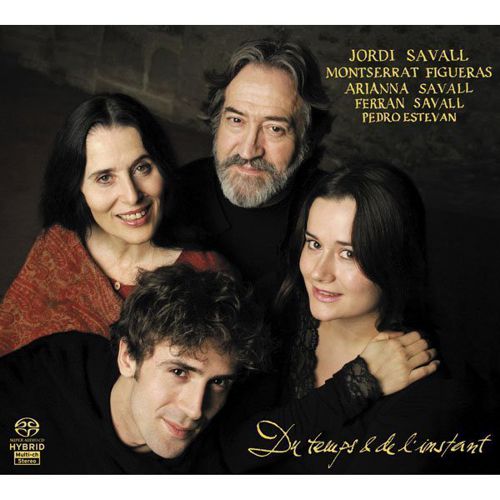| John Broskie's Guide to Tube Circuit Analysis & Design |
|
13 April 2020 Post 500
500: Halfway There* If I post 50 times a year, it will take an additional 10 years to reach post 1,000. It is a good thing that I am not a betting man, as I would bet against it happening that soon. At the same time, I would have certainly bet against ever reaching post 500. What a crazy idea! Who could or would write that many words? Draw that many schematics? Run all those SPICE simulations? Who would be crazy enough to believe that new circuits, especially new tube-based circuits, were possible? Apparently, I am that crazy.
We all need goals, no matter how improbable or difficult. In fact, if the goal isn't improbable or difficult, then it isn't much of a goal. Often, it is better to discover, as I did, that you have a goal after you already started working towards it. Somewhere near post 100, I realized that, other than disability or death, nothing stops me from going on to post 1,000. Post 100 was a big deal, as was post 300, but posts 200 and 400 had little impact. In contrast, post 500 seems extra weighty. (Actually, post 503 will tickle me, as it is the next prime number, as was post 499. Only 73 primes left before 1,000.)
If I had any marketing sense, I would have mailed off (a week ago at least) paper notices and emails to all the audio and electronics magazines and websites, announcing my 500th post. (The big secret is that all these organizations are always in need of content, of filler, of clumps of words to separate the ads.)
Thanks for reading my posts. And special thanks to my Patreon patrons. If you know one of them, you should thank him as well, as he motivates me to post more often; in his and his fellow Patreon Patrons' absence, this would probably be post 400, not post 500. Speaking of Patreon, my teenage son made me sign up with them. I was convinced that little would come of it. I was wrong. But one of the motivating reasons I did so was that I wondered what those who had asked the most of me would do. Would they sign up and support me? For example, I have held intense 50 email exchanges with a few readers, emails that contained many schematics and text that ran close to one of my posts; all the emails concerned their audio systems and projects, not mine. Would they support me through Patreon? Here is another example: I have helped many audio companies out. In a few cases, I designed their entire product line for free. (It always begins with a plea for help with one aspect of their design and ends with my complete overhaul or a complete replacement of their circuits.) Admittedly, these tended to be tiny, one-man companies—but not all of them. For example, when I attended the CES in 2005, I was told by the rep of one of America's biggest names in tube audio that I was hero with the guys in engineering. I was sure he had confused me for someone else, but I still asked, how so? His answer was that I had "pulled their chestnuts out of the fire" [his phrase] as I had fixed the huge problem with their new flagship product's high-voltage regulator. Now, I was sure he mistook me for someone else, as I would have certainly remembered that event; the company was a big, big name in tube audio after all. When I returned home, I searched my email. Dang. He was right. The famous company had written a few years earlier, and I found about five back and forth emails from the company and my corrections to their regulator's design for free. How did I forget the event? If given an intriguing chess problem clipped from a newspaper, do you really care which newspaper it was printed in? I saw a troubled schematic and my mind was off in search of a solution. No, in spite of that flagship product selling for close to $10,000, they are not one of my Patreon patrons. Actually, I didn't expect them to be. Do you remember that kind stranger that helped you when your car broke down or when it got stuck in the snow?
Found Time Simple things now take much longer. For example, I had to wait half an hour before my turn at the bank drive-through station with the pneumatic tubes, but at least some lovely Mozart played on the radio. At Trader Joe's, a fixed and small number of customers were allowed in the store at any given time; I waited patiently my turn, six-feet apart from the other eager customers, our faces covered. Alas, no chocolate chips were to be had. When my found time arrives, I am ready to start drilling and punching holes in a metal enclosure. I would hate to have gone through a pandemic and not built anything. I hope that you, too, plan to build some audio gear during the lockdown. I have often thought that what DIY audiophiles really need is a DIY audio club, where the emphasis would be on assembly. Imagine if each member brought one of his stalled projects to the meeting. He would detail his hopes and his hurdles. Everyone would offer either a solution or actual physical help in completing the project. And he, in turn, would help others. The club would keep meeting until all the projects were finished. Once the backlog of half-built projects cleared, the club could take on a group project.
The great thing about having built ten identical pieces of audio gear is that you can now hold shootouts. If they are all the same, what would be the point? My bet is that there would be a few winners and few losers—in spite of them seeming to be identical. Perhaps, a different brand of tubes were used or a different solder or hook-up wire. Whatever caused the winner to win would then be retrofitted to all the other units. Now, the fun would begin. One unit would be left as it is, but all the others would be modified but by only one thing or in one way, either a device or a layout scheme. Why?
If two or more modifications are made, you can never be certain which is helping and which might be hurting our goal of better sound.
Then a new shootout commences. Whatever modification makes the winner sound better gets added in all the other units. The process continues, until either perfection or exhaustion arrives. See post 357, for more details on how to climb the ladder of sonic improvement.
Self-Biasing Retrograde Cascode
The best approach is not to fixate on one circuit, but to abstract the triode and the PNP transistor as a two-device unit, which we insert in other more complicated circuits. In an alternate universe, some tubes come pre-built with each triode getting its own PNP transistor built in a metal base that doubles as a heatsink. In our universe, we have to wed them together ourselves. This hybrid combo allows us to dream up circuits that would have dazzled your father or grandfather. For example, the simplest use of the triode-PNP combo would be as a replacement for a cathode resistor to cathode-bias the triode. Effectively, the PNP transistor functions as a capacitor-multiplier circuit.
The transistor's base must draw some current for the transistor to conduct current from its collector to its emitter, as the electrons flow, but as the conventionally-minded see it: from the emitter to the collector. The 10µF capacitor shunts the 10k base resistor. The PNP transistor effectively multiplies the amount of capacitance by the current gain of the transistor, i.e. the transistor's beta or β. With a beta of 100, the effective capacitance would equal 1kµF. This circuit is not a cascode of any sort, but we can create one by adding a resistor.
The gain is roughly equal to the triode's transconductance against the resistance. Since the voltage window is so small in this circuit, the resistor value must be small, hence the gain must also be small. On the other hand, if we use a constant-current source in parallel with a resistor, a larger-valued resistor, we can get some decent gain. For example, we could make an MC step-up pre-preamp with a gain of 20dB.
The 1.5k resistor draws only 1.12mA of current. As the triode's current conduction varies due to the input signal at its grid, that variation in current flow is relayed through the PNP transistor to the constant-current source and load resistor. The B+ voltage must be well filtered or regulated, as the circuit's PSRR is only -9dB. Not so good. On the other hand, we can add one capacitor and increase the PSRR to -60dB. The wonder of Aikido mojo.
The bottom capacitor must be mu times bigger than the top capacitor, where mu is the triode's amplification factor. With this ratio between capacitors, the transistor's base will see 1/(mu + 1) amount of the B+ voltage ripple, which it will then pass on to the triode's cathode. Since the cathode is mu + 1 times more effective in controlling the flow of current through the triode than the plate, the ripple on the plate is cancelled by the tiny portion of ripple at the cathode. How so? If you raise the plate voltage, you increase the triode's current flow; if you raise the cathode voltage, you decrease the current flow. Now let's see how the retrograde cascode works, we can move on to more typical uses. The following is a high-gain retrograde-gain stage based on the triode-PNP grouping.
We have moved the triode and transistor up in voltage so that more voltage is available to the load resistor. The SPICY label marks those circuits that work perfectly in SPICE simulations, but not in reality. For example, just moving the resistor values off by 1% might be enough to blow up the circuit in reality, as this cascode offers so high a DC and AC gain. Here "blow-up" means that the collector voltage might fall to 0V or climb to within millivolts of the base voltage. In SPICE, all resistors are 0.00…001% within specifications. The simplest workaround is to use a single resistor to bias the PNP transistor.
Since signal applied to the transistor's base becomes inverted at its collector, the single resistor forms a DC negative feedback loop, which auto-corrects the voltage drop across load resistor (Rc). If the voltage drop is too high, the base resistor (R) will see too little current flow to justify the high current flow through the triode and transistor. In contrast, if the voltage drop is too low, the base resistor (R) will see too much current flow, which in turn will force the transistor to draw more current. Here is the same circuit, but fleshed out in part values.
The triode draws 4.4mA and the gain comes in at a tad over 40dB, with an external load impedance of 100k. In SPICE simulations, the THD was better than 0.1% with 1Vpk of output signal at 1kHz. Taking this design to the next step means adding some Aikido mojo to improve the PSRR, so the circuit could be used as a microphone or a phono preamp.
Both the resistor and capacitor values must reflect the triode's amplification factor (mu), but in an inverse fashion. Capacitor C1 must be mu times bigger than capacitor C2, but R1 must be 1/mu as big as resistor R2. Okay, let's look a design that makes use of the retrograde cascode: a phono preamp.
The three 6DJ8 triodes in parallel both lower the noise and output impedance. (We could use the third triode in a cathode-follower configuration instead.) Passive RIAA equalization follows the grounded-cathode amplifier. The retrograde cascode stage then provides the missing gain. Note that only one coupling capacitor is used. Another approach to auto-bias is the active route, wherein we use an extra PNP transistor to monitor the current flow through a small-valued plate resistor (Ra).
The RC low-pass filter prevents the AC audio signal from being seen by the top PNP transistor's base. In addition, the capacitor shunting the 100k collector resistor also filters away AC content and provides a low-impedance path to the ground. Be warned, this sort of DC servo can create subsonic humps. In other words, this approach is best left to those who own an oscilloscope. We can add some Aikido mojo with the following schematic.
The 3.3µF capacitor injects just enough power-supply noise to the bottom PNP transistor's base to counter the B+ voltage ripple, greatly enhancing the PSRR. Once again, the ratio between the two capacitors is critical, perhaps too critical. Another approach to auto-bias is to use a cathode resistor.
The 270-ohm and 1M and 300k resistors work to set the desired current flow. Adding the Aikido mojo is simple.
The big problem with actually implementing this Aikido mojo technique is that capacitors are seldom 1% tolerance and the spread between values is coarse. In addition, tubes differ, both with each other and against themselves over time, although amplification factor is the more stable attribute over time, unlike plate resistance. One workaround would be to add a potentiometer.
This variation uses a cathode resistor and 300k base-to-collector resistor to set the bias voltages. The potentiometer sees only AC signals, as the top and bottom capacitors isolate it from DC current flow. The potentiometer and resistor values were chosen to allow the more range of adjustment. What about those times when we want less gain or a precise amount of gain? If you step back and look at the topology, you see that the triode's gird is the non-inverting signal input, while the transistor's base is the inverting input. All we have to do is supply the base with a portion of the output signal and we will have created a negative feedback loop.
Here we see two approaches. The one on the left allows us to use a smaller-valued coupling capacitor, but will prove more tweaky in practice. The one on the right requires a larger coupling capacitor, but is more likely to establish the desired voltage relationships. Both versions deliver a gain of +30dB. Adding Aikido mojo is interesting, as the 402-ohm resistor must be included in the operation. The 12.1k resistor is 30, or mu, times greater than 402 ohms. The 100µF capacitor is mu times bigger than the 3.3 µF that terminates into the B+ voltage. In other words, both the resistors and capacitors conform to the correct mu ratios. Here is the result.
Power-supply noise null extends deep enough to ensure that the ripple frequency, either 100Hz or 120Hz, is covered. I planned on showing more examples of how the triode-PNP combo could be put to work, but this post grows long, the snow falls outside my window, and my dogs need emptying.
Music Recommendation: Du Temps & De L'Instant
While wasting a lot of time searching, I found a gem of an album, a family album no less, Du Temps & De L'Instant. (Translates as "Time & Instant.") Jordi Savall and his wife, the late Montserrat Figueras, and their two children, and percussionist Pedro Estevan create a fun album. In short, they play and sing the music they like best. Only one of the 19 tracks failed to win me over. The recording is excellent. Too bad Tidal does not offer an MQA version. By the way, I did finally find the Mozart's Requiem, but it wasn't easy, although it should have been. The cover had been replaced by a generic cover that a ten year-old would be ashamed to have created.
Neither the cover or Tidal lists the orchestra or singers. I only found it due to my remembering that the first track held Mozart's Maurerische Trauermusik. In spite of the hassle, this recordings is one of my favorites. Give it a listen as well. This is not your father's fat, bloated Requiem, but one that Mozart would have enjoyed.
//JRB
*Halfway There
Mention "midway" and few will think of Midway Island and the epic victory in the air-sea battle in June 1942. But when I hear the word "midway," I instantly think of T.S. Eliot, not just due to April being the cruelest month, but because of his poem, Four Quartets; and Eliot, in turn, thought of the first line of Dante's Inferno,
Not my favorite translation, alas. Where are the road and the dark forest? Here is the original:
What I love about good poetry—which died due to neglect, academic malpractice, and government funding about 40 years ago—is that lines from a poem can remain dormant in my memory, but surface when needed. In post 494, I quoted from the poem, A Litany in Time of Plague, by Thomas Nashe. I read the poem once, over forty years ago, but the line "The plague full swift goes by" just popped into my mind, as the pandemic began its spread.
User Guides for GlassWare Software
For those of you who still have old computers running Windows XP (32-bit) or any other Windows 32-bit OS, I have setup the download availability of my old old standards: Tube CAD, SE Amp CAD, and Audio Gadgets. The downloads are at the GlassWare-Yahoo store and the price is only $9.95 for each program. http://glass-ware.stores.yahoo.net/adsoffromgla.html So many have asked that I had to do it. WARNING: THESE THREE PROGRAMS WILL NOT RUN UNDER VISTA 64-Bit or WINDOWS 7 & 8 or any other 64-bit OS. I do plan on remaking all of these programs into 64-bit versions, but it will be a huge ordeal, as programming requires vast chunks of noise-free time, something very rare with children running about. Ideally, I would love to come out with versions that run on iPads and Android-OS tablets.
//JRB
|
|
I know that some readers wish to avoid Patreon, so here is a PayPal button instead. Thanks. John Broskie Special Thanks to King Heiple John Gives
Special Thanks to the Special 83
I am truly stunned and appreciative of their support. In addition I want to thank the following patrons:
All of your support makes a big difference. I would love to arrive at the point where creating my posts was my top priority of the day, not something that I have to steal time from other obligations to do. The more support I get, the higher up these posts move up in deserving attention. If you have been reading my posts, you know that my lifetime goal is reaching post number one thousand. I have 500 more to go. My second goal was to gather 1,000 patrons. Well, that no longer seems possible to me, so I will shoot for a mighty 100 instead. Thus, I have 17 patrons to go. Help me get there.
Only $12.95 TCJ My-Stock DB
Version 2 Improvements *User definable Download for www.glass-ware.com |
||
| www.tubecad.com Copyright © 1999-2020 GlassWare All Rights Reserved |




